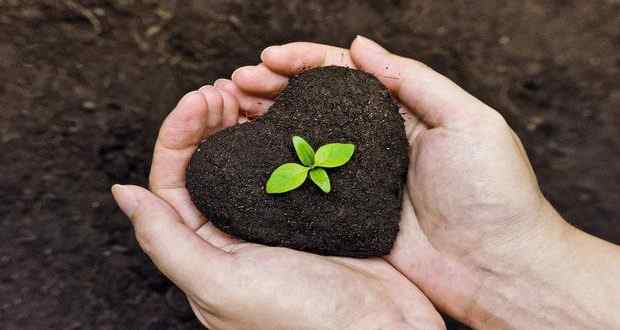Sustainable agriculture meets the needs of present and future generations while guaranteeing profitability, environmental preservation, and socio-economic equity.
It favors nature-imitating methods to preserve soil fertility, prevent water pollution, and protect biodiversity.
The concept behind sustainable agriculture is the creation of an ecological farming practices system backed up by tech innovations to produce healthy food with respect for the environment.
For a long time, industrial agriculture was a reliable way to produce large volumes of food at a relatively low cost. Besides, it implies unsustainable farming practices that pollute water, air, and soil, resulting in pollution and depletion of these resources. To prevent this from happening, more and more modern farmers switch to sustainable agriculture.
The key principles of sustainability in farming are aimed at maintaining natural resources through using non-renewable and on-farm resources in the most effective way possible. And the main forces behind this are crop management and modern technology.
Agriculture Crop Management Approaches
Smart crop management is critical in ensuring soil health and fertility. Its main approaches entail the implementation of crop rotation, planting of green manure crops, and maximum tillage reduction.
Crop Rotation
Crop rotation includes a whole range of measures that are necessary to increase yields and protect soil from erosion, pests, and diseases. Regular cultivation of the same crop on a particular field contributes to soil depletion, so agronomists recommend regularly changing crops for growing.
The introduction of a crop rotation system is aimed at solving three major problems:
- Creation of sufficient conditions for the growth and development of plants based on the requirements of crops to certain properties of land plots
- Increasing labor productivity in agriculture through better organization of production processes for mechanized processing of fields, product storage, processing, and transportation
- Preservation and improvement of soil fertility based on a rational farming system, the introduction of land protection measures, and maintaining the soil’ humus balance
Ultimately, crop rotation is one of the main smart innovations leading to sustainability in farming, according to the report.
It contributes to the replenishment and better use of soil nutrients, improving and maintaining favorable physical and biological properties of the soil, protecting it from water and wind erosion, preventing the spread of weeds, diseases, and pests, and reducing the pesticide load on the land and plants.
All of this allows for preserving the environment and hence obtaining high-quality, healthy food products.
Green Manuring
With the boom of organic farming that avoids the use of chemical fertilizers, believing that it deteriorates the nutritional value of products and reduces crop resistance to diseases and pests, the use of organic fertilizers is gaining popularity.
The best way of enriching the soil organic matter is to plant green manure crops that will later be dug into the soil to “feed” it with the necessary elements.
Green manuring is primarily aimed at increasing nitrogen and organic matter in the soil. Under the influence of microorganisms, plant residues decompose and turn into humus, which is the basis of soil fertility.
Green manures improve the agrochemical, physicochemical, and physical properties of the soil: the excess acidity of the soil is neutralized, the hydrolytic acidity and the content of mobile aluminum decrease, and the cohesion of sandy and sandy loam soils increases.
Due to the increase in humus content and improved agrochemical and agrophysical properties of the soil, its biological activity is enhanced, the above-soil air is enriched with carbon dioxide, the air nutrition of plants is improved, and the activity of the soil microflora is activated.
Reduced to No-Tillage
One of the frameworks of sustainable farming listed here is smart land management. Traditional soil tillage is proven to increase the threat of wind and water erosion. Reduced or no-tillage technology eliminates this problem. After all, this technique implies gentle soil treatment. The minimum disturbance of the soil structure is the essence of this system.
Instead of intensive tillage, the farmers who apply a no-till approach on their fields use mulching. Mulch spread over the land plot creates a thick layer that preserves and restores the fertile soil layer.
At the same time, the soil is protected from water and wind erosion, and weeds do not germinate. An active microflora is formed with a large number of micro-and macroelements, thanks to which high crop yields are achieved.
Reduced or no-tallage also means there is less equipment needed, hence fewer costs spent on fuel. Besides, the emission of carbon dioxide and other products of fuel combustion into the atmosphere is reduced.
Agriculture Technological Approaches
Approaches for crop management via agriculture technologies are already revolutionizing the way modern farming operates. Here are the main innovations that are effectively used by growers worldwide.
Satellite Monitoring
In general, field monitoring is a very labor- and time-consuming process. Especially when it comes to large land plots. Monitoring fields with satellites is a modern solution to this issue. With remote sensing data, farmers get the most accurate insight promptly.
Satellite monitoring is the observation of crop health based on satellite imagery. To evaluate crops’ state remotely, vegetation indices are used.
The most popular index in the agricultural sector is the NDVI, which allows for analyzing green mass state to determine plant condition throughout its cultivation.
But how do farmers access all of this data? For that, the agricultural market offers a variety of online farm management tools like Crop Monitoring that leverage satellite images for advanced field analysis in one place.
With such tools, farmers can easily identify field problem areas to plan further activities smarter. Another benefit of satellite monitoring is that in addition to the current state of crops, growers retrieve data for the last few years to perform comparison and planning relying on patterns and tendencies observed in the area. This means smarter crop rotation planning, as well as yield forecasting.
Irrigation Systems
Irrigation innovations appear regularly due to the occurring environment preservation trends that include smart water resources management.
As agriculture is one of the major industries responsible for water consumption, more and more farmers are looking for ways to optimize irrigation. Luckily, modern irrigation systems are already here.
Be it field devices or drones and satellite monitoring, technology offers numerous opportunities for weather and soil moisture tracking. This means smarter irrigation planning, hence less water used.
Biotechnology
Modern biotechnology offers several solutions that can significantly facilitate the solution of several agricultural issues:
- Breeding plant varieties resistant to pests, diseases, and unfavorable environmental factors
- Development of biological means of pest control, the use of their natural enemies and parasites, as well as toxic products formed by living organisms
- Increasing the productivity of crops and their nutritional (fodder) value
Generally, sustainable agriculture practices aim to preserve environmental resources via applying вata-based crop and soil management for smarter and more effective farm management.
Also Read: Types of Wedding Dresses
Follow Top and Trending on Google News and receive the latest alerts and the main news about apps, technology, beauty, entertainment, and all the top 10 related posts.



